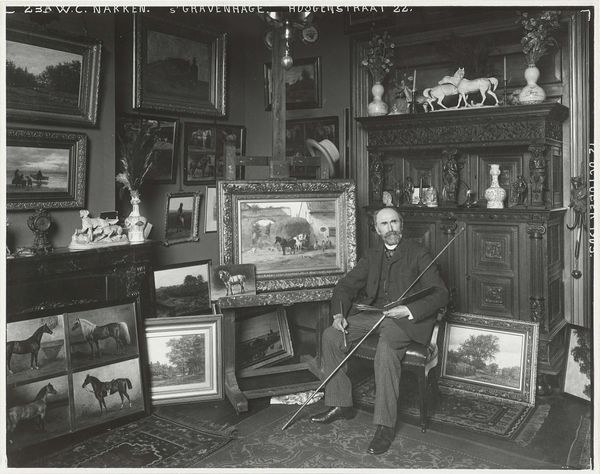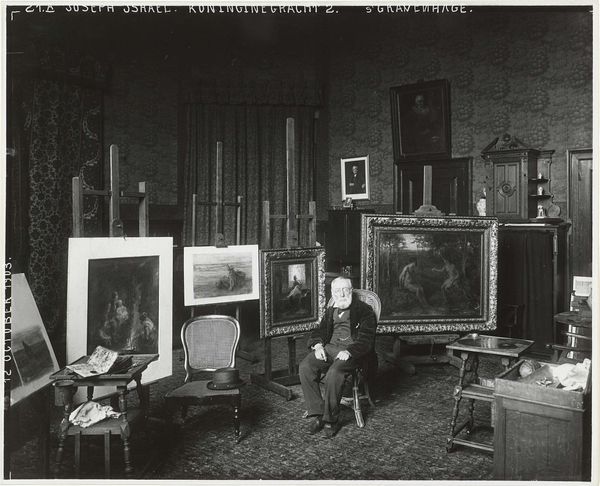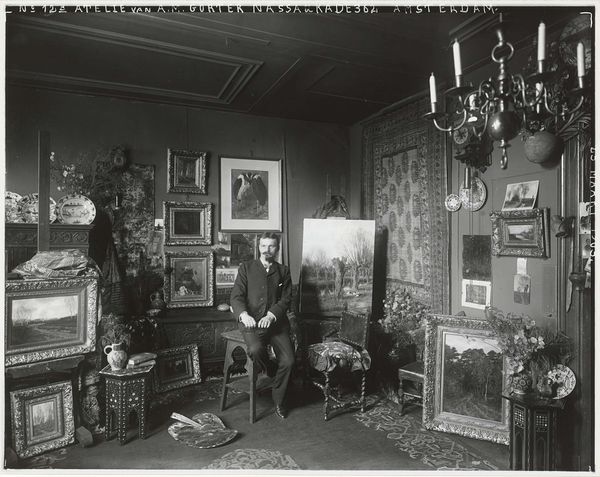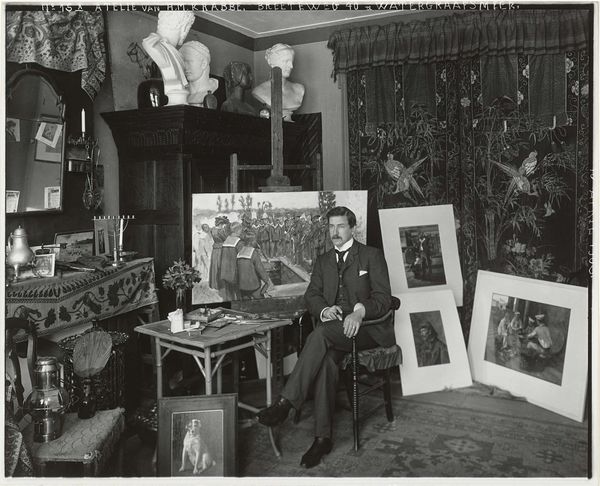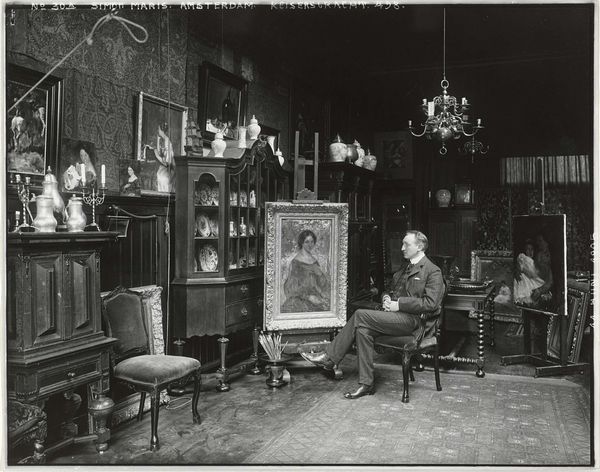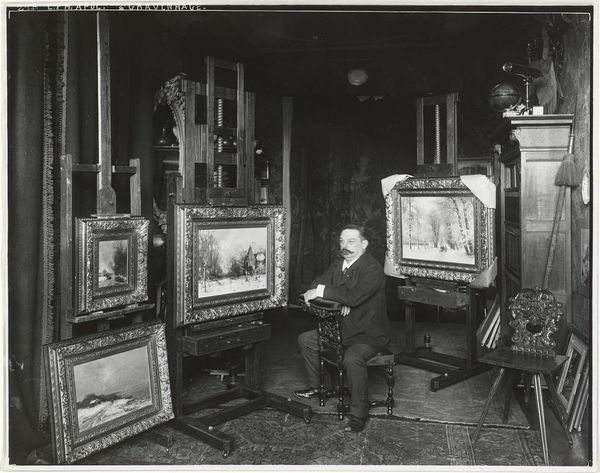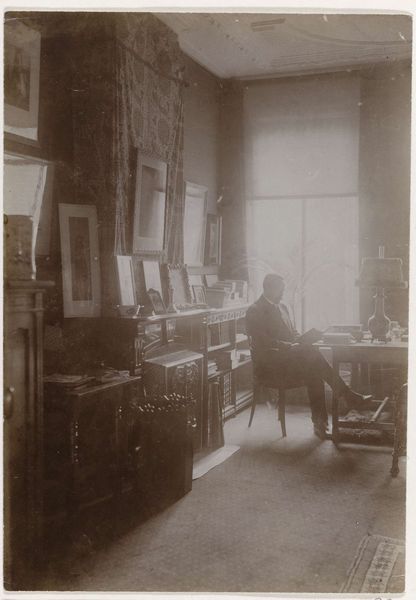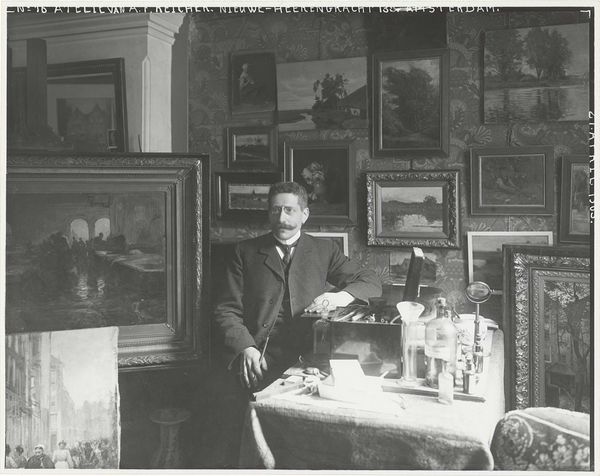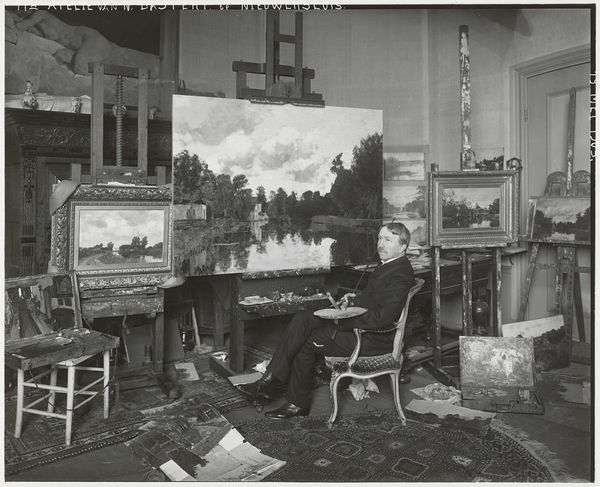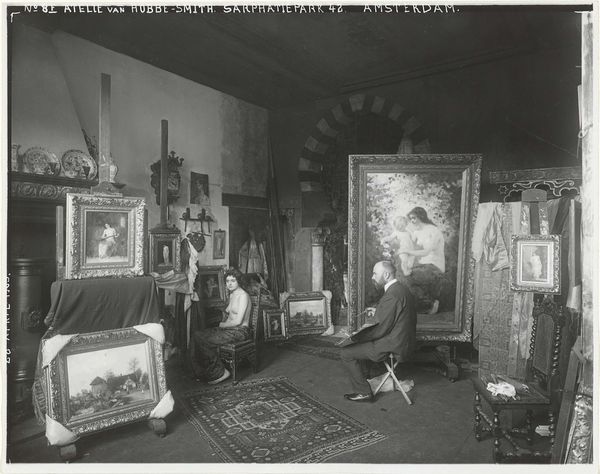
Julius van de Sande Bakhuyzen in zijn atelier op de Huijgenstraat 19 in Den Haag after 1903
0:00
0:00
Dimensions: height 244 mm, width 303 mm
Copyright: Rijks Museum: Open Domain
Curator: Here we have "Julius van de Sande Bakhuyzen in his studio on the Huijgenstraat 19 in The Hague," a gelatin-silver print taken after 1903 by Sigmund Löw. Editor: What a remarkable portrait! The artist, framed by his own landscapes, all muted greys and soft light – it’s like he’s constructed his own world, piece by piece. Curator: Exactly, Löw captured not just a portrait, but an environment steeped in the means of production, dominated by finished and unfinished work. Observe the textures – the smooth photographic print contrasting with the impasto visible in some of Bakhuyzen’s framed paintings. Editor: I am drawn to the relationship between Bakhuyzen's artistic labor, captured here, and the expectations of artistic genius at the turn of the century. How does this representation challenge or reinforce those romantic notions? The very ordinariness of the setting pushes against the grain. Curator: It's intriguing how Löw, with his photographic lens, places himself in a lineage of artists portraying artists, participating in the politics of representation. But whose gaze are we meeting here? It’s difficult to assess if Bakhuyzen collaborated or was passive in the photographic process. Editor: Perhaps he yielded control to Löw, allowing the photographer's interpretation to become part of the narrative. But consider the material reality. The print itself—the paper, the chemical processes, the photographer's skill—contributes to its own meaning, right? Curator: Precisely, the image documents Bakhuyzen's work while becoming another layer, adding new complexity to the existing artistic context. The monochrome enhances that sense of layers of history and material making that inform meaning in the image. Editor: Thinking about craft, technique, and agency in photographic portraiture provides invaluable context for reassessing these historical records, don’t you think? Curator: Indeed, considering photography, an emerging industry itself, through the same critical lenses helps expand our understanding of late 19th and early 20th century art. Editor: Well, this image encourages one to think through both subject and object with a clearer perspective.
Comments
No comments
Be the first to comment and join the conversation on the ultimate creative platform.

